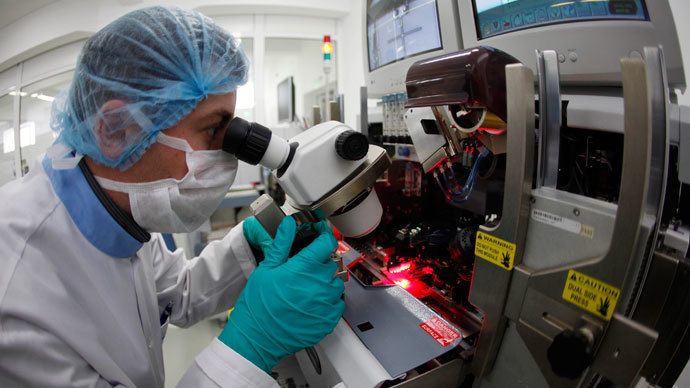Canadian scientists use math to kill cancer

Researchers in Canada are pinning their hopes on advanced mathematics in the fight against cancer, using sophisticated models to enhance engineered viruses that home in on and destroy cancerous cells.
Nature Communications has just published a paper authored by
Ottawa researchers that deals with the use of oncolytic viruses,
a fairly new method that involves the engineering of
intentionally infecting and killing tumors in the human body
while avoiding harm to healthy tissue.
Oncolytic virus human trials have so far been very limited, but
the research produced by the Canadian team could have wide
repercussions in their use. Dr. John Bell and the paper’s
co-author Dr. Mads Kaern have developed mathematical models that
could altogether bypass expensive and time-consuming trials by
using simulations instead.
“By using these mathematical
models to predict how viral modifications would actually impact
cancer cells and normal cells, we are able to accelerate the pace
of research,” says Kaern.
The models explore the infection cycle of the cancerous cells as
they are attacked by the engineered viruses, and from there
researchers can examine the spread and the defense mechanisms
released by the tumor cells.
Using the results from those simulations, scientists can explore
how to modify the genome, or the genetic structure of the virus,
to counter the anti-viral defenses of the cancer cells. That
represents a significant time-saving measure without before ever
using live biological specimens, such as tumor-bearing mice.
According to the research team, the raw mathematical models have
so far been surprisingly accurate.
“What is remarkable is how well
we could actually predict the experimental outcome based on
computational analysis. This work creates a useful framework for
developing similar types of mathematical models in the fight
against cancer,” says Bell.
The use of oncolytic viruses, a method known as virotherapy, has
come a long way. Initially, researchers attempted to thwart
cancer cells using naturally-occurring oncolytic viruses, such as
the poliovirus, the Coxsackie virus and others. Some clinical
trials have gone further, such as the use of the “T-VEC” virus, which normally causes
cold sores, to help in the treatment of melanoma, or skin cancer.
Early success with chemotherapy and radiation for treating cancer
into remission caused virotherapy to become sidelined in cancer
research, but progress with model-based methods using engineered
cancer-killing viruses could well change all that.
Still, researchers caution that their results with mathematical
models will be unlikely to deliver a cure-all solution to cancer
treatment, though the Canadian team’s research still represents
an exciting development.
“The most fascinating thing is
to challenge existing knowledge represented in a mathematical
model and try to understand why these models sometimes fail. It’s
a very exciting opportunity to be a part of this, and I am glad
that our efforts in training students in computational cell
biology have resulted in such a significant advancement,”
says Kaern.














